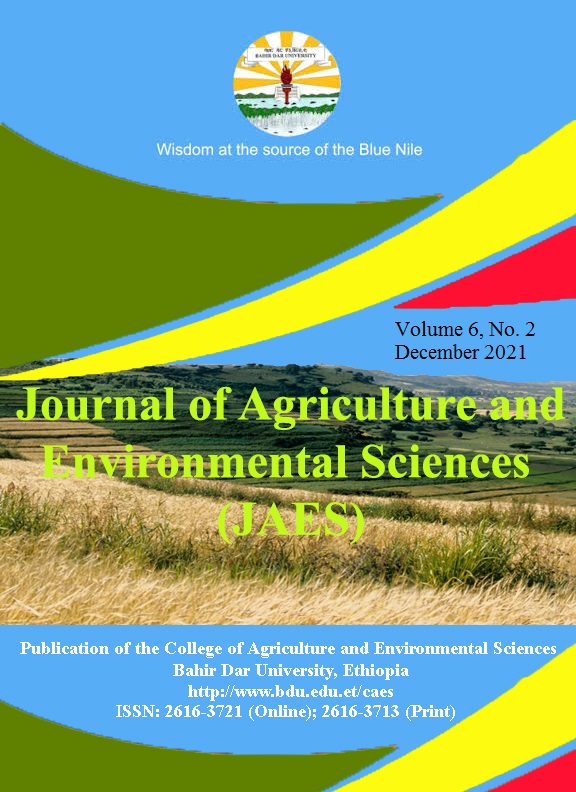Phenotypic Characterization of Indigenous Goat Population Reared in Uba Debre- Tsehay and Zala Districts of Gofa Zone, South Ethiopia
Abstract
The objective of this study was to describe the morphological features of indigenous goats in two
lowland districts of Gofa zone in their home tract, Ethiopia. A total of 170 goats (50 males and 120 females)
were used for the morphological characterization. Results confirmed that there were morphological variations
in terms of coat color patterns. Accordingly, about 49.2% of goats showed plain followed by patchy (27.8); the
dominant coat color was brown (44.7%) followed by white (32.7%). About 98.5% goats were characterized by
possessing horn, 80.5% curved horn-shape, 54.5% with obliquely-upward horn orientation, 75.2% horizontal
ear-orientation, 88.0% straight head-profile, 92.0% partially-sprit scrotum-type, 6% wattle presence, 38.0%
beard and 2.5% ruff. There were no statistically significant morphological variations between males and
females (p>0.05). These may be due to the high off-take rate of male goats at an early age. A significant
difference (p<0.05) was observed between age and linear body measurements. There were significant
correlations found among body weight with body length (r=0.81), wither height (r=0.67), chest girth (r=0.82),
head length (r=0.64) and horn length (r=0.61). Morphological traits’ variations suggest that this goat
population has not yet been selected through structured selective breeding.
Copyright (c) 2021 Journal of Agriculture and Environmental Sciences

This work is licensed under a Creative Commons Attribution-NonCommercial 4.0 International License.
Authors who publish with this journal agree to the following terms:
- Authors retain copyright and grant the journal right of first publication with the work simultaneously licensed under a Creative Commons Attribution License that allows others to share the work with an acknowledgement of the work's authorship and initial publication in this journal.
- Authors are able to enter into separate, additional contractual arrangements for the non-exclusive distribution of the journal's published version of the work (e.g., post it to an institutional repository or publish it in a book), with an acknowledgement of its initial publication in this journal.
Authors are permitted and encouraged to post their work online (e.g., in institutional repositories or on their website) prior to and during the submission process, as it can lead to productive exchanges, as well as earlier and greater citation of published work (See The Effect of Open Access).


